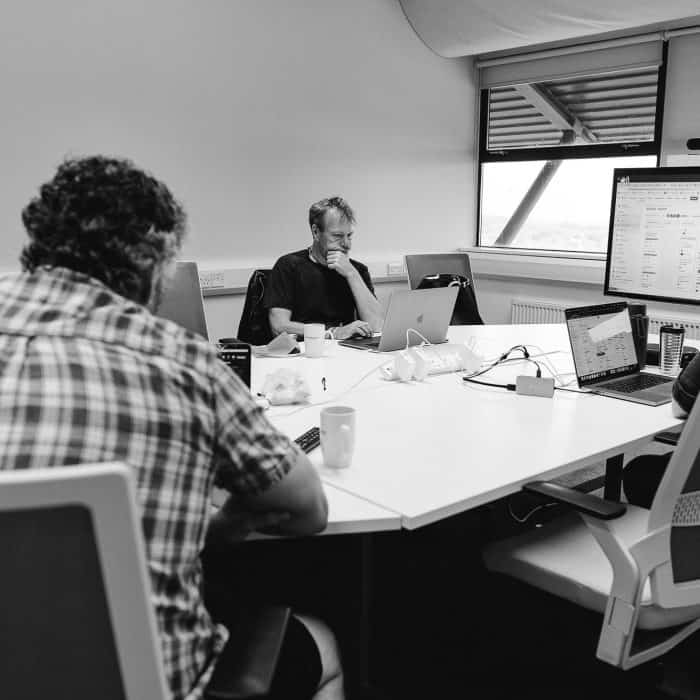
Technical sprints: quick projects with significant long-term value
Unique to Headforwards, technical sprints offer valuable time for analysis, reflection, and upskilling. Product Manager Owen Hodge explains the wide-ranging benefits for all.
Now we’ve talked about the practicalities of building an outsourcing partnership, it’s time to explore what happens next. Once you’ve decided to outsource, it becomes a question of who – and where – you choose to do your work.
There’s a lot of jargon to navigate in the IT world – and outsourcing is no exception.
So, let’s break down the difference between onshoring and offshoring for outsourced software development and evaluate some of the pros and cons. We’ll also pose a new question about how you outsource: in an age of widespread remote working and digital collaboration, does it even matter where your partners are based?
If you’re outsourcing to developers on other continents – like sending your work to China or India from the UK, for example – you’re farshoring.
It’s historically been a source of incredibly low-cost code work, from a huge pool of developers, which can dramatically decrease the outlay of a project while ensuring there’s specialist talent available to work on it.
However, choosing such a distant destination for your outsourcing can affect collaboration. Say you’re sending work from Manchester out to Beijing – the seven-hour time difference can make it near-impossible to have real-time interactions with your offshore team. For some straightforward projects, that can actually be a benefit; working asynchronously means your coding is essentially done overnight and will be waiting in your inbox the next morning. But for complex projects that require a lot of back and forth, you’ll risk major delays as you wait for responses.
Nearshoring is the middle ground between farshore and onshore work (more on that below). You send your work out to another country, but one that’s close by – often sharing a border.
For a company in the United States, nearshoring usually means outsourcing to Mexico, or even Canada. Central European countries like Germany and France might venture to somewhere like Poland. This offers the access to specialist skills and the cost-savings of developing in cheaper countries, within similar time zones for ease of collaboration.
That proximity means you’re unlikely to come up against the cultural differences or language barriers that can make farshoring impractical. Plus, keeping your projects within your continent can make key considerations such as regulatory compliance and data sovereignty easier to manage.
Keeping the developers you work with close is a great way to maintain control of your projects while managing costs. For example, if you’re based in a major city, wages and living costs can be sky-high. Move out to some of the smaller centres, and you can develop your software in a more affordable environment.
This is the ideal approach if you want to work really closely with the development team, without the risk of language barriers or disparate time zones getting in the way. But what you gain in terms of logistics, you can lose in terms of budget and access to skills. Often, onshoring remains a pricier alternative to offshoring, and you’re still confined by the talent that’s available nearby. By looking further afield, there’s no limit to the skills you can hire.
At their heart, partnerships are about the people. And it can be difficult to build that vital connection between people over long distances and through video calls. However, that doesn’t mean it’s impossible – it just requires a new approach.
We believe that collaboration works best when people have the opportunity to share ideas and develop code together directly. This won’t always happen face to face – but a long-term partnership deserves a real investment of time and effort. That’s all dependent on the partner you choose, not where they’re based. At Headforwards, we’ve spent years turning collaboration into an art form; giving our clients high-touch partnership support anywhere in the world. It’s all about knowing how to find the best way of working together, whether a client is practically next door or based on the other side of the world.
Some of our approaches, such as continuous delivery, produce the highest standard of work when they’re conducted with all the stakeholders and developers working closely together. When we do mob programming, for example, we like to invite the client to join our team for a session or two, whether that’s in-person or via video conference.
In the past, the debate between onshoring and offshoring has been much more clear-cut: onshoring is simpler but more expensive, and offshoring is cheaper but can be logistically difficult. But now, there are always workarounds to ensure clients are getting the best of both worlds.
It’s easy to forget in the world of technology and coding, but good partnerships – and great work – come from remembering how important the human element is. With the right team working on a project, there are always new methods to get everyone working together and pulling towards the best outcome. It’s an approach that we’re always striving to perfect, and if that sounds like a partnership that appeals to you, let’s talk.
Headforwards™ is a Registered Trade Mark of Headforwards Solutions Ltd.
Registered Address: FibreHub, Trevenson Lane, Pool, Redruth, Cornwall, TR15 3GF, UK
Registered in England and Wales: 07576641 | VAT Registration Number: GB111315770